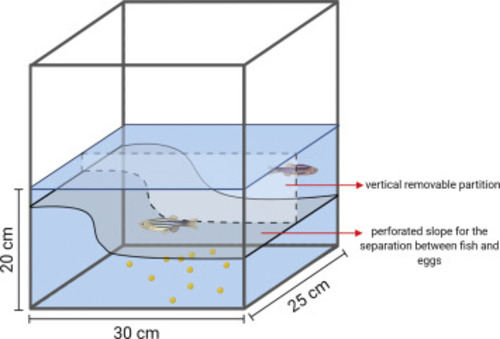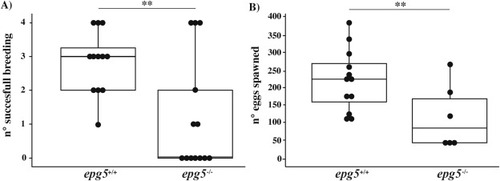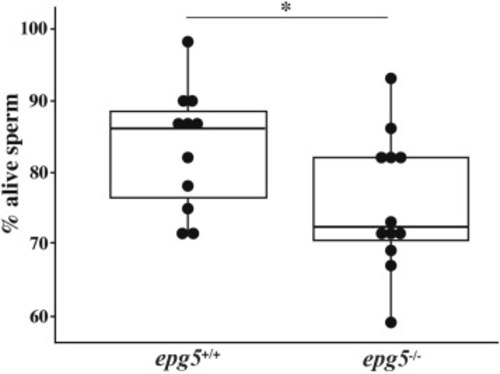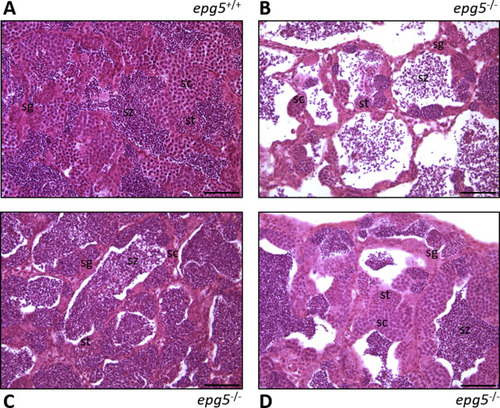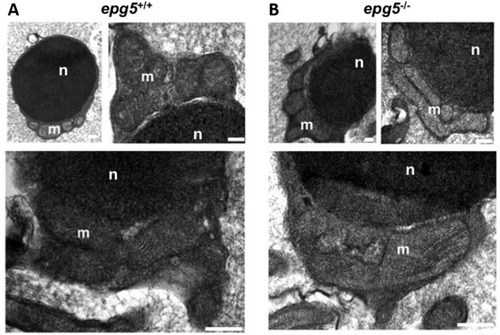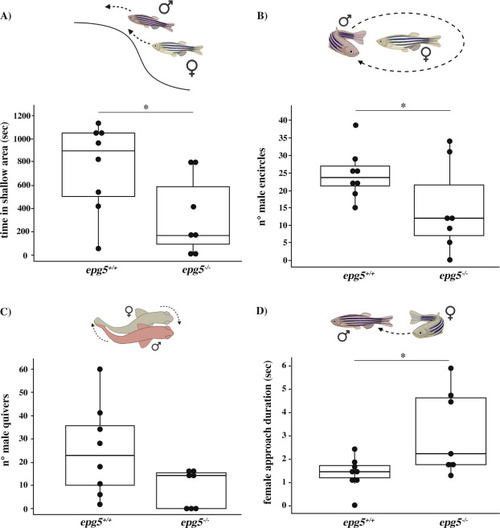- Title
-
epg5 knockout leads to the impairment of reproductive success and courtship behaviour in a zebrafish model of autophagy-related diseases
- Authors
- Fontana, C.M., Locatello, L., Sabatelli, P., Facchinello, N., Lidron, E., Maradonna, F., Carnevali, O., Rasotto, M.B., Dalla Valle, L.
- Source
- Full text @ Biomed J
|
Fig. 1. Schematic representation of the tank used for behavioural mating trials. Image created with BioRender.com. |
|
Fig. 2. Breeding performance of epg5+/+ and epg5−/− males. (A) Number of successful breeding events in 4 reproductive rounds (n = 12 epg5+/+ and 13 epg5−/−) and (B) number of eggs spawned by WT females in successful breeding events (n = 12 epg5+/+ and 6 epg5−/−). Boxplots (first to third quartile) with median line and whiskers (1.5 interquartile range). ∗∗p < 0.01. PHENOTYPE:
|
|
Fig. 3. Sperm viability in epg5+/+ (n = 11) and epg5−/− (n = 12) males. Viability is calculated as the percentage of alive sperm. Boxplots (first to third quartile) with median line and whiskers (1.5 interquartile range). ∗p < 0.05. PHENOTYPE:
|
|
Fig. 4. Histology of the testes of epg5+/+ (A) and epg5−/− (B, C, D) males. Males (A), (B) and (C) showed 100% of breeding success in previous reproductive trials, whereas male (D) did not reproduced. Scale bar 50 μm sg = spermatogonia; sc = spermatocytes; st = spermatids; sz = spermatozoa. PHENOTYPE:
|
|
Fig. 5. Transmission electron microscope on sperm of epg5+/+ and epg5−/− adult zebrafish. Representative transversal sections showing no obvious differences in morphology of nuclei (n) and mitochondria (m) of (A) epg5+/+ and (B) epg5−/− sperm. Scale bar, 200 nm. PHENOTYPE:
|
|
Fig. 6. Male and female reproductive behaviours. epg5+/+ (n = 8) and epg5−/− (n = 7) males were coupled to WT females. (A) Time spent by the couple in shallow water area; (B) number of male encircles; (C) number of male quivers; (D) time spent by the female approaching and chasing the male. Boxplots (first to third quartile) with median line and whiskers (1.5 interquartile range). ∗p < 0.05. Fish icons created with BioRender.com PHENOTYPE:
|

